The famous Selkirk Bannock has been made in Scotland for hundreds of years, particularly in the Scottish Borders. This deliciously flavoursome fruit bun is about as far removed from a traditional bannock as possible.
If you love fruit loaves, tea buns, or fruity bread, then the Selkirk Bannock may be the Scottish recipe you’ve been looking for.
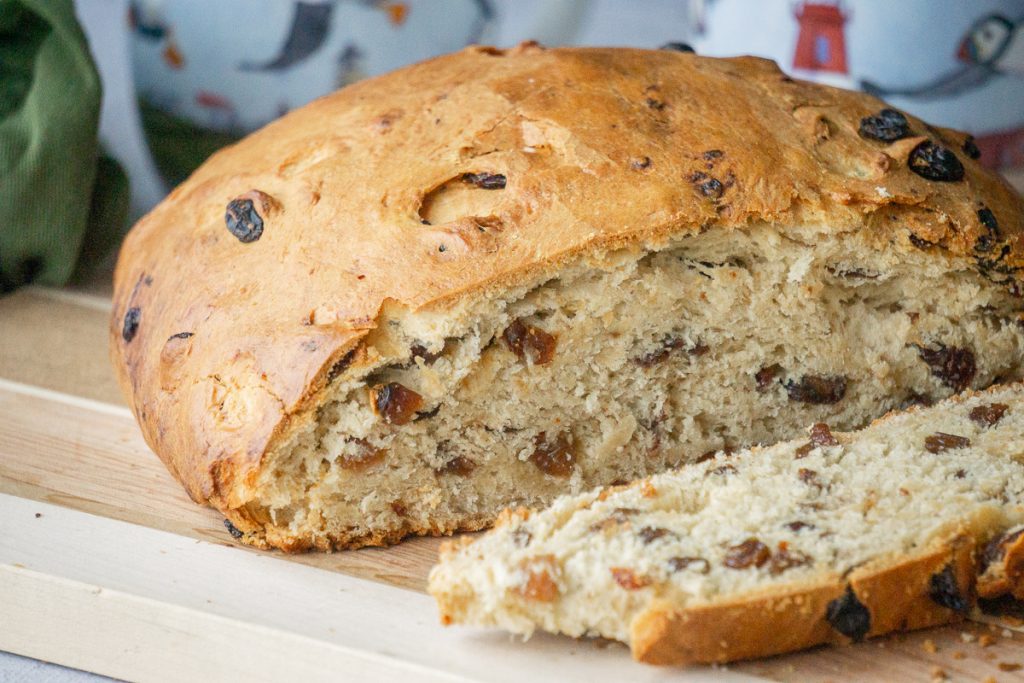
What is a Selkirk Bannock?
The humble Selkirk Bannock is precisely what is needed on a cold Scottish night when you want a little something for your tea. This sturdy loaf is bursting with fruit, flavour and buttery goodness.
Served with butter, toasted or not toasted, Selkirk Bannock is a flavoursome loaf which seriously deserves to be a global classic. People worldwide should enjoy a slice of Selkirk Bannock every morning or like a mince pie or a hot cross bun at Christmas or Easter, respectively.
Pin for later!
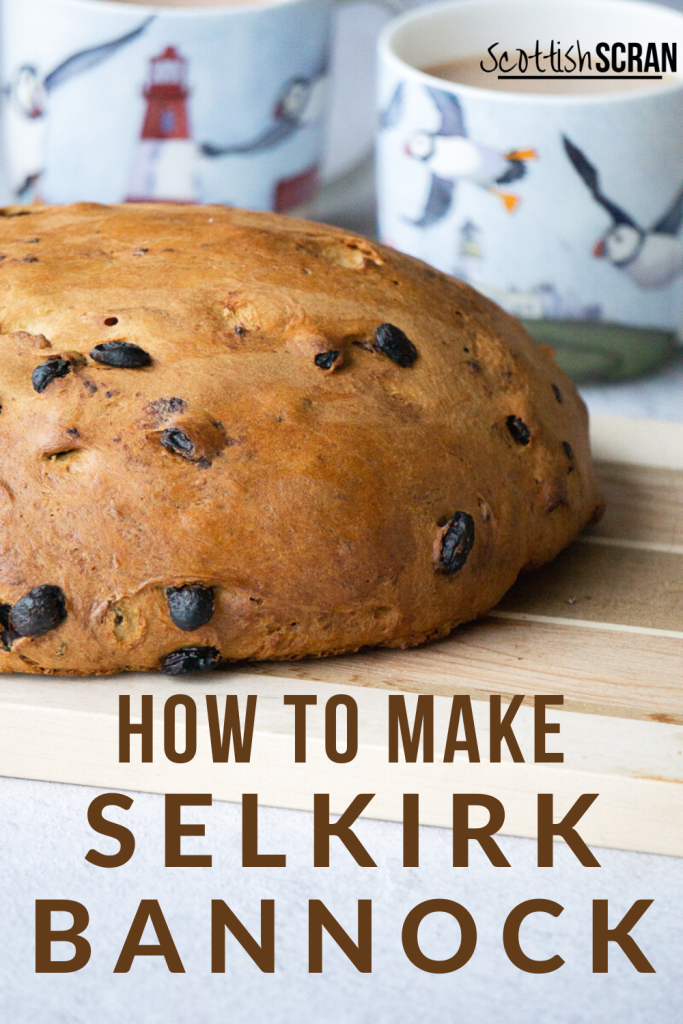
Where do Selkirk Bannocks come from?
The Selkirk Bannock unsurprisingly originates from Selkirk in the Scottish borders. Though potentially made in the area for some time before this, Selkirk-based baker Robert Douglas was the first to make them commercially.
He was looking for a use for his leftover bread dough in the mid-1800s. Adding sugar and fruit and allowing the dough to ferment led to the creation of the Selkirk Bannock.
This recipe has been continued by Alex Dagetty, who worked for Douglas, and generations of his family since then to this day.
To enjoy an original Selkirk Bannock, visit Alex Dagetty and Sons in Galashiels. If you can’t make it there, scroll down to our recipe for the next best thing.
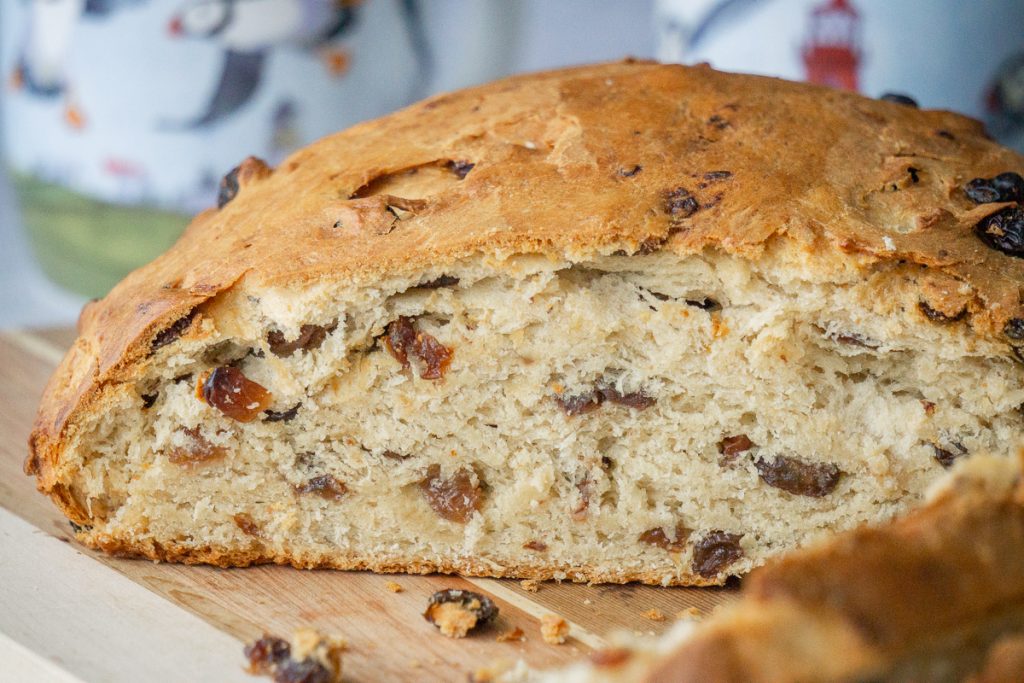
How did Selkirk Bannocks become famous?
The Selkirk Bannock has been featured in several notable places, which has led to its continued fame and popularity.
For example, Sir Walter Scott was the first to mention a Selkirk Bannock in print in 1819. It obviously made an impression because he still served it at his home in 1867.
The person enjoying it with him was none other than Queen Victoria; this royal endorsement set the Selkirk Bannock’s popularity in stone for the next 150 years and beyond.


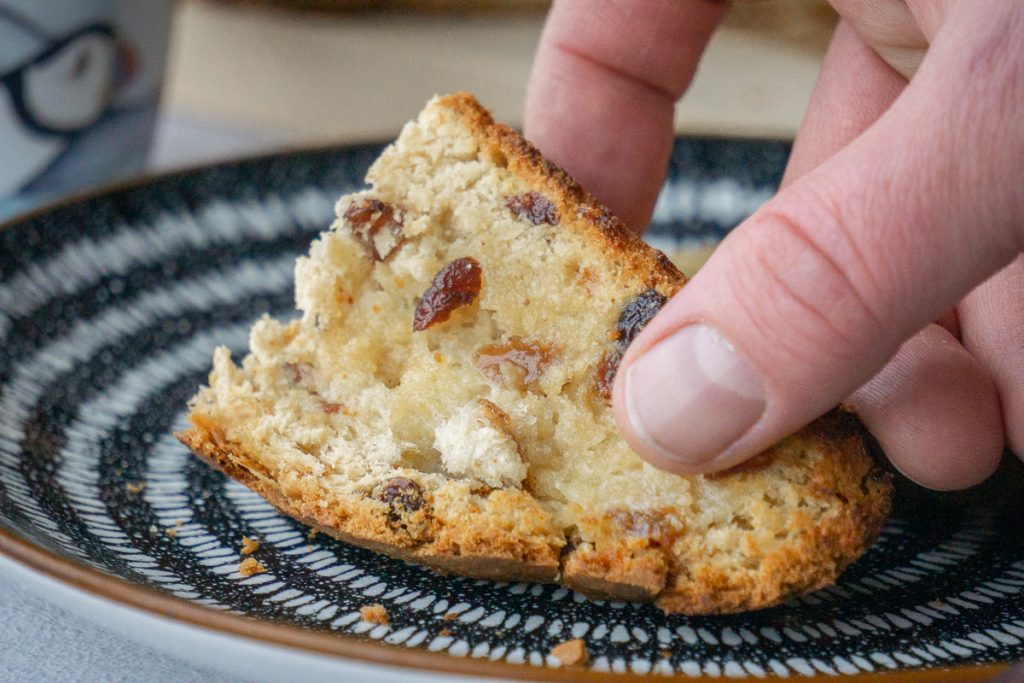
Things you’ll need to make a Selkirk Bannock
A traditional Selkirk Bannock goes through several slow fermentation processes, giving it a deep, rich flavour. Our recipe produces something as close to the traditional Selkirk Bannock as possible in a more manageable, speedier manner.
Trust us, it is worth a try!
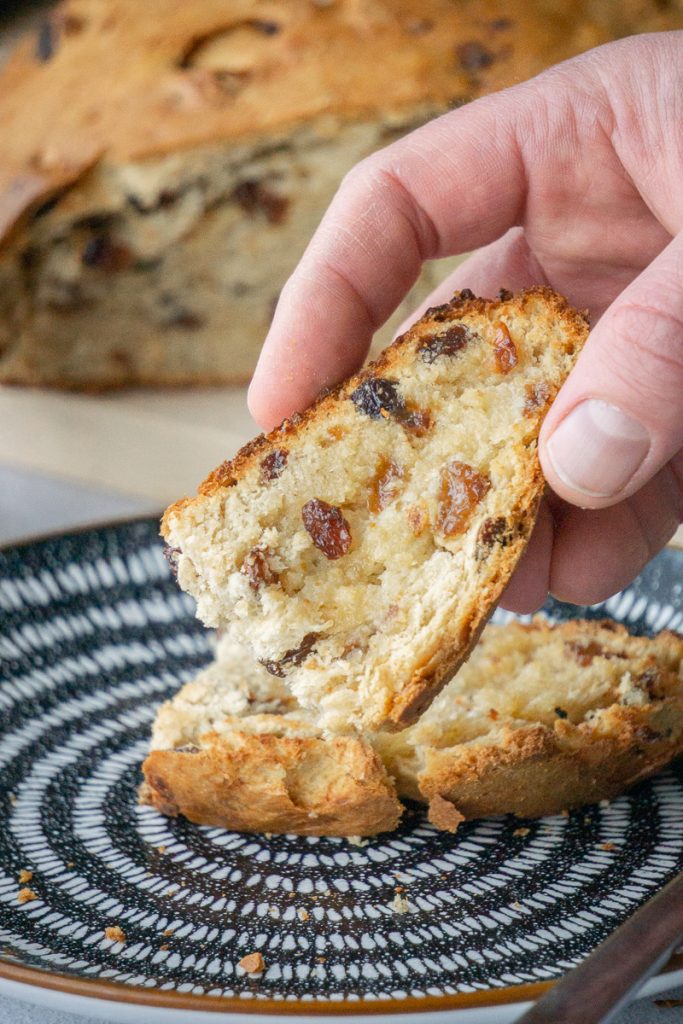
Things you’ll need to make a Selkirk Bannock
- Large Mixing Bowl
- Scales
- Pot
- Whisk
- Wooden spoon
- Baking Tray
- Parchment Paper
- Cling Film (Saran wrap / Glad Wrap) or a Damp Cloth
Ingredients for a Selkirk Bannock
- 500g Strong white flour (4 Cups)
- Pinch of salt
- 7g dried instant yeast
- 65g Brown sugar (1/3 Cup)
- 250ml Warm full-fat milk (1 Cup)
- 100g Butter (1/2 Cup)
- 300g Dried fruit – we used sultanas and raisins (3/4 Cup)
- Milk for a glaze
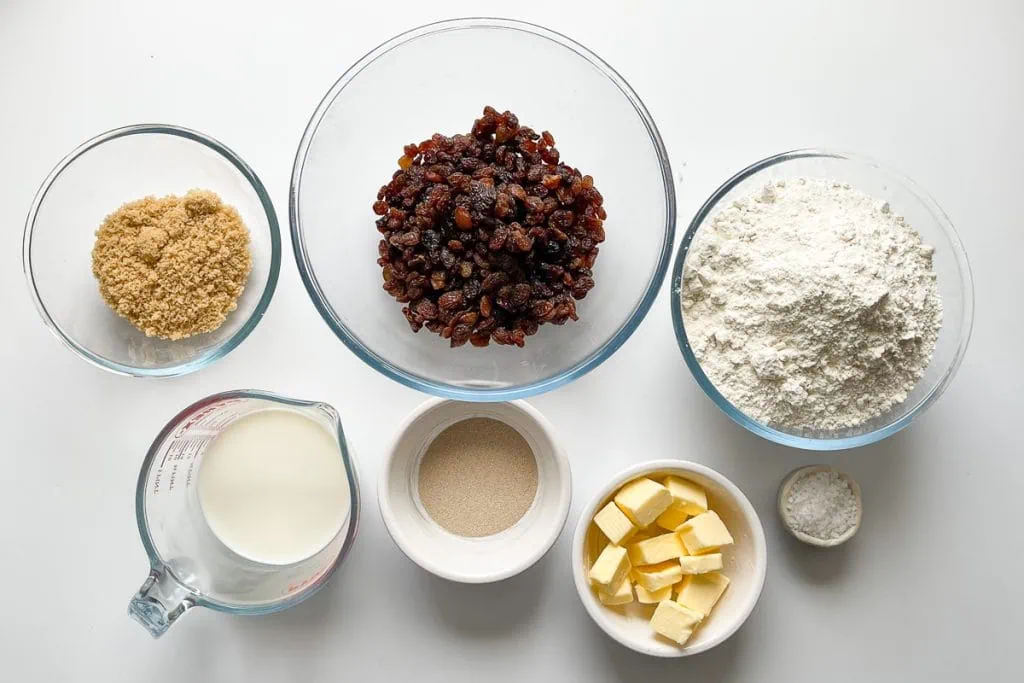
How to make a Selkirk Bannock – Step-by-step method
Making a Selkirk Bannock requires a little patience and a warm room or oven. We’ve found that proving your dough is the key to success here and because we live in a cold old croft none of our rooms were warm enough. Don’t be afraid to use your oven!
Mix the flour, sugar, salt, yeast and fruit in your bowl. We used sultanas and raisins in ours because our boys like them, but any mix of dried fruit or peel adding up to 300g works.
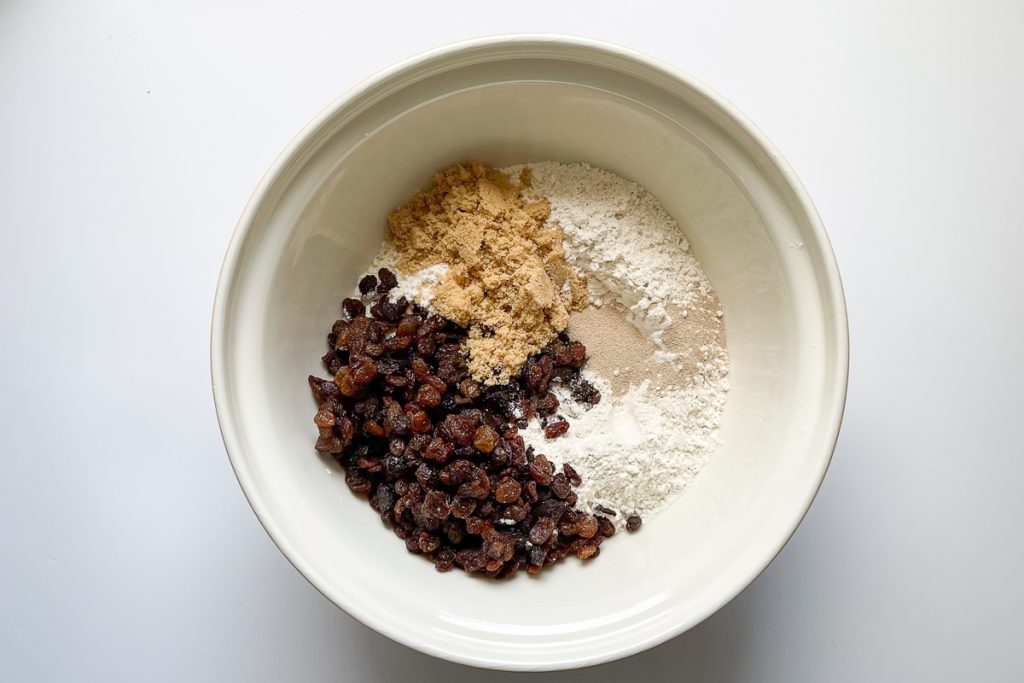
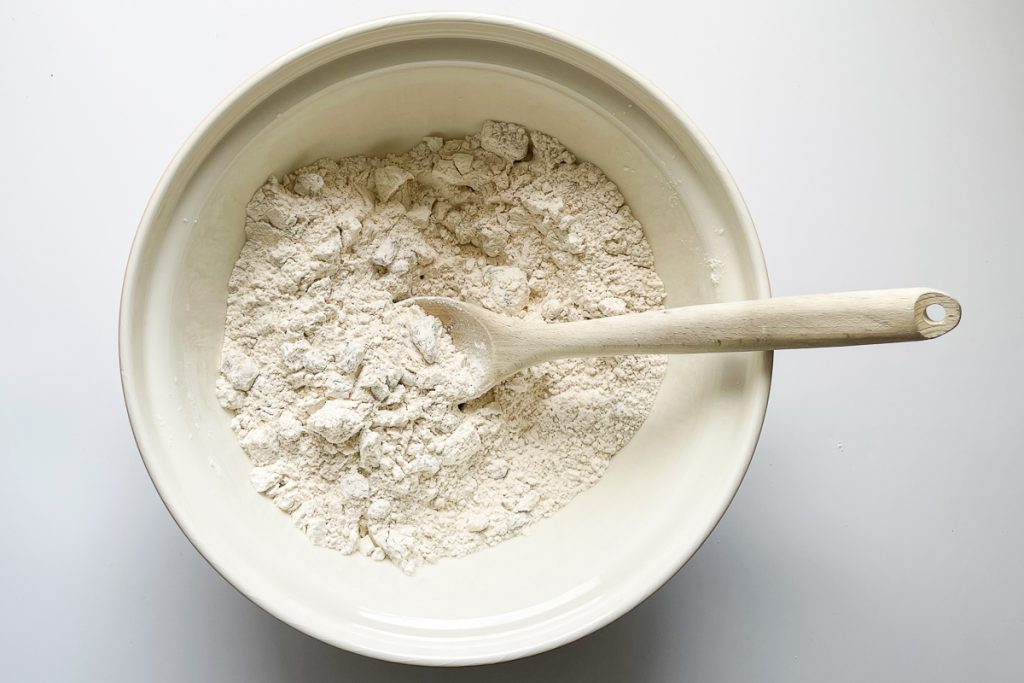
Heat your butter in a saucepan slowly; once melted, add your milk and whisk both together. Do this while continuing to warm.
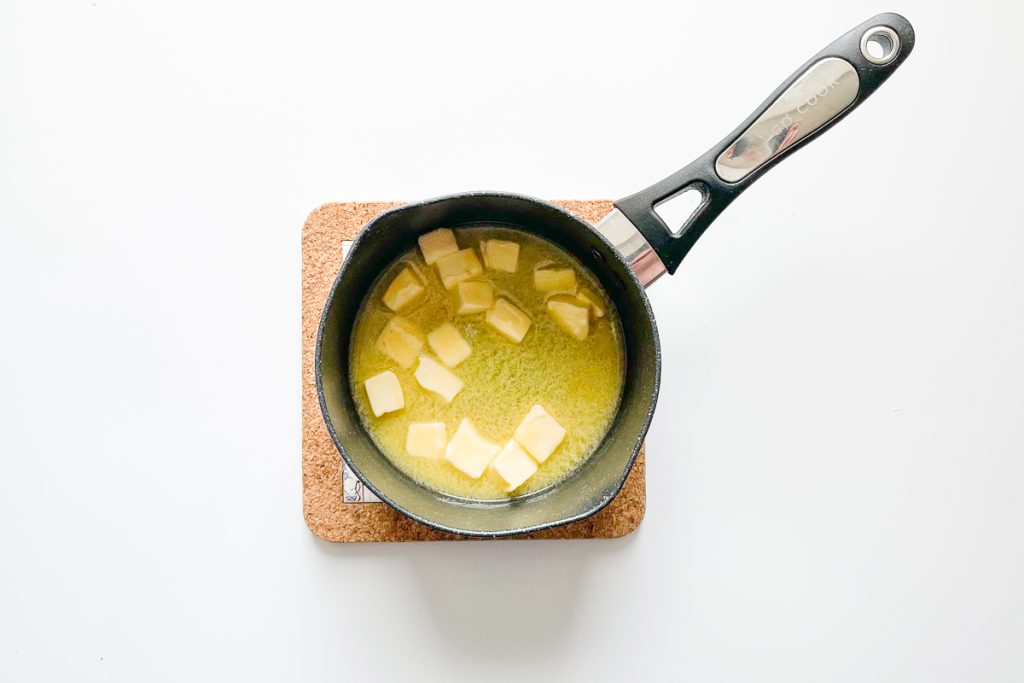
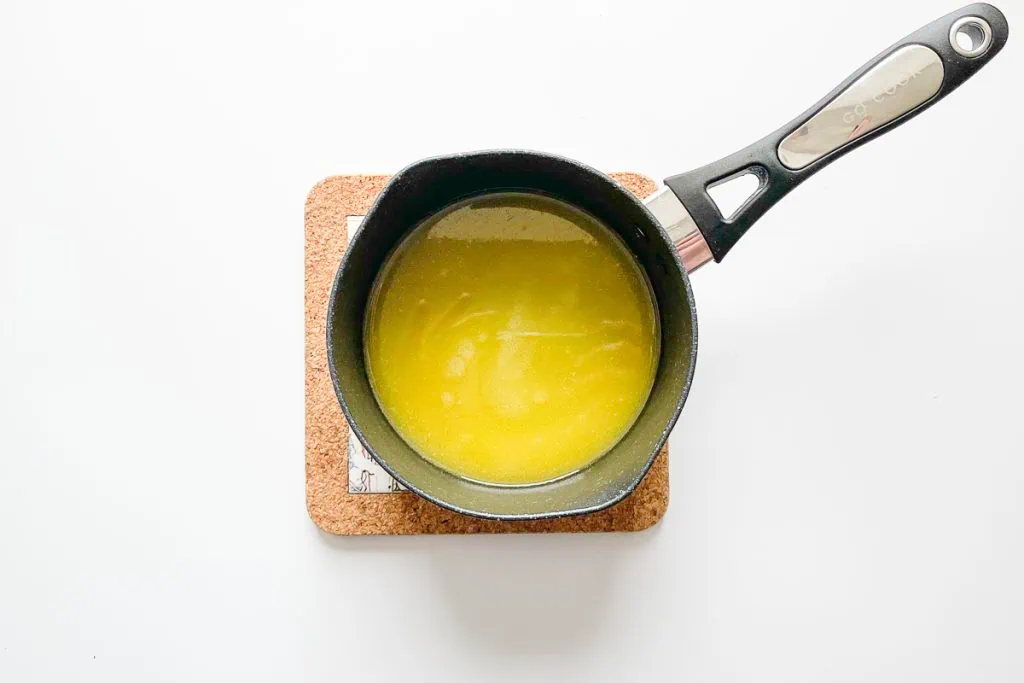
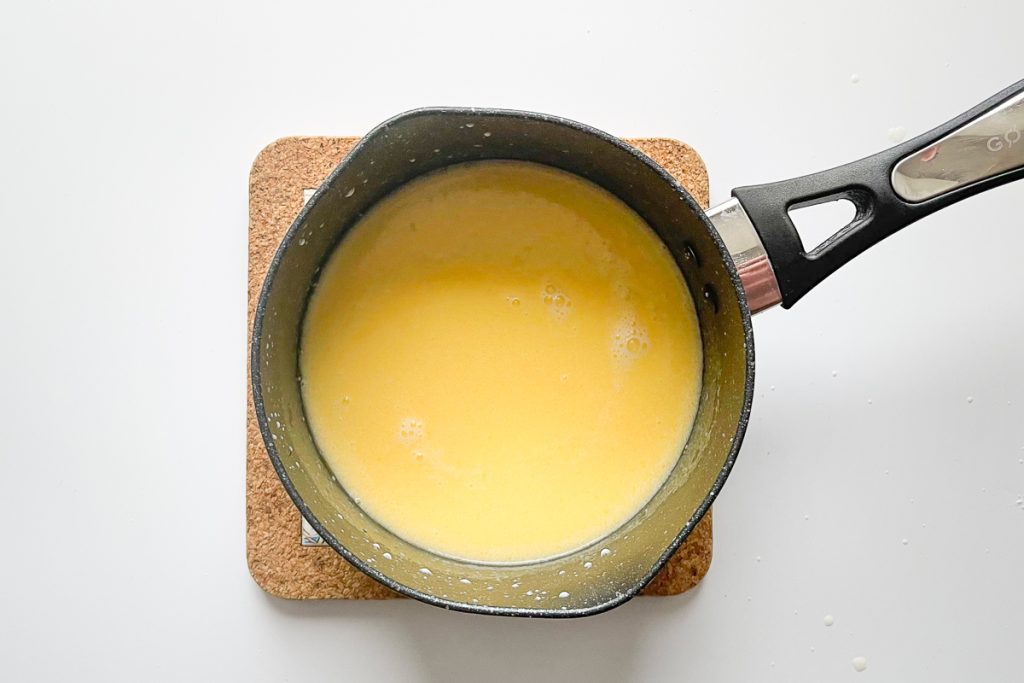
Do not boil the mix. Just warm enough to activate the yeast while whisking. 38C is apparently the optimal temperature for this if you’d like to measure it.
Once whisked and warm, add to the dry ingredients slowly, stirring it in gently with a wooden spoon.
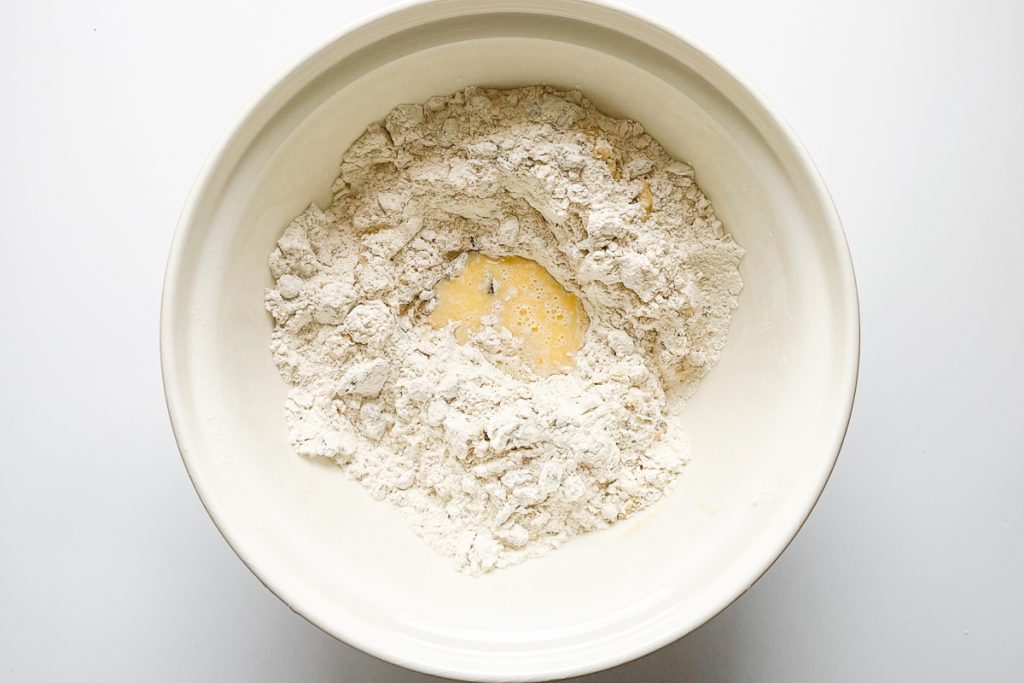
With clean hands, work the mixture together, kneading it for five minutes. We did this in the bowl but you can do it on a clean, floured work top. If the mixture seems too sticky and you’re happy all the dry and wet ingredients are mixed together, add a little more flour slowly to reduce the stickiness. Don’t over-flour, as this will affect the end result.
The first time we did this, we jumped the gun before the mix was fully brought together, thinking it was far too sticky. Perserver and be sure everything has come together before adding more flour.


Once well kneaded, cover your bowl with cling film or a damp cloth and put it somewhere warm to allow the dough to prove. We popped ours in the oven at 40C because our house is a little chilly, but an airing cupboard would work, too.
Prove for 1 hour or until the dough has doubled in size.
Take your proved dough and ‘knock it back’ / gently knead again for 2 minutes.
Knocking back was a new phrase to Phil. It simply means knead the dough after it’s had time to prove, bursting any bubbles formed, improves the final texture and makes it easier to shape.
Shape your dough into a round shape.

Cover and prove again in your warm spot until doubled in size; ours took between 45 minutes to an hour; temperature and moisture play a big part in this.
Lay a sheet of parchment paper on your baking tray.
Preheat a fan-assisted oven to 160C. Use a slightly higher temperature for a standard oven.
Once your dough has finished proving. place onto the covered baking tray and glaze with milk. Some people use a glaze of milk and sugar, but we found this was a little too much, and the Bannock didn’t need it.
Once glazed, pop in the oven. It should take 40-50mins, but this will depend on the shape and heat of your oven. We suggest checking at 35 minutes, and if the top is browning too much, loosely cover the top with a layer of tin foil.
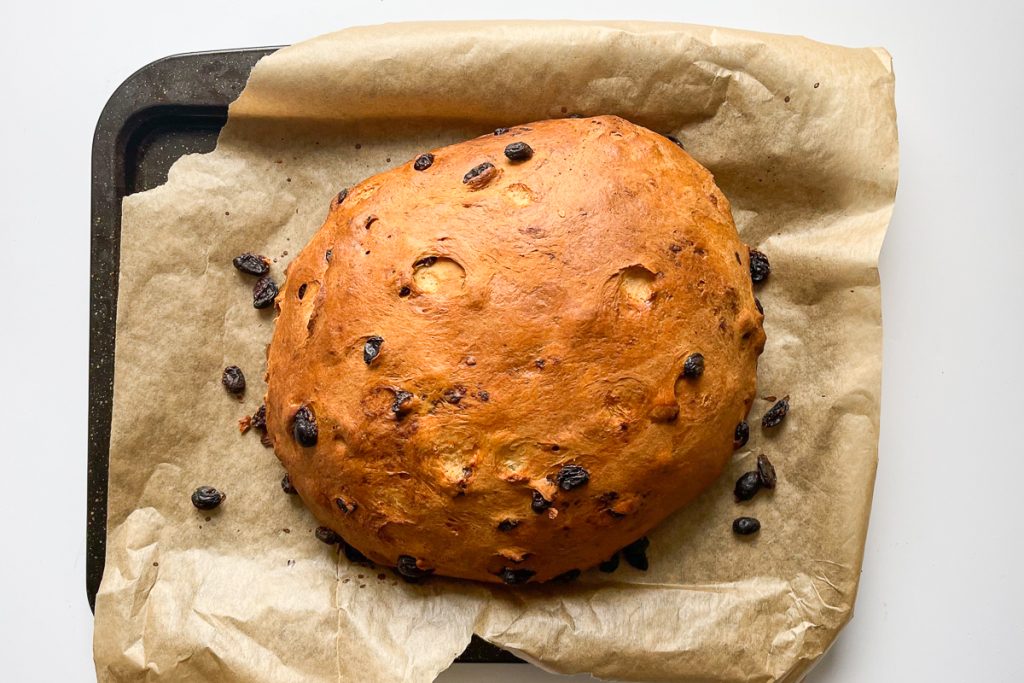
Your Selkirk Bannock will sound hollow when tapped once it’s cooked.
Allow to cool.
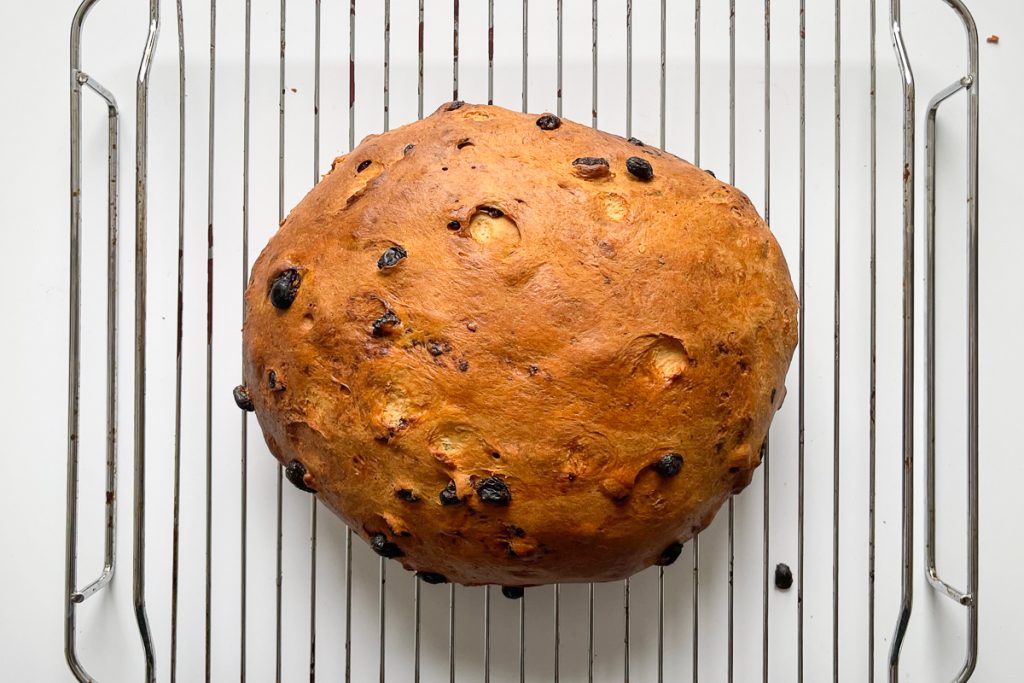
We find that as tasty as your Selkirk Bannock will be straight out of the oven, once cooled, it seems to taste even better and easier to slice.
If you have any left the following day, it’ll taste better still. We suggest toasted, with a good spread of butter.
Enjoy!

Traditional Selkirk Bannock
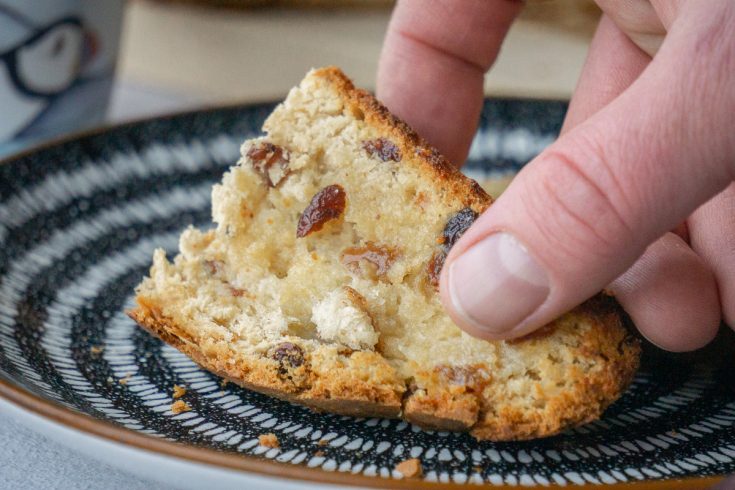
The Selkirk Bannock is about as far away from a traditional bannock as you can get. This delicious fruit loaf is simple to make and a firm family favourite. Be prepared to toast and butter multiple slices of this moreish loaf that is hundreds of years old!
Ingredients
- 500g Strong white flour (4 Cups)
- Pinch of salt
- 7g dried instant yeast
- 65g Brown sugar (1/3 Cup)
- 250ml Warm full-fat milk (1 Cup)
- 100g Butter (1/2 Cup)
- 300g Dried fruit - we used sultanas and raisins (3/4 Cup)
- Milk for a glaze
Instructions
- We've found that proving your dough is the key to success here. Don't be afraid to use your oven!
- Mix the flour, sugar, salt, yeast and fruit in your bowl.
- Heat your butter in a saucepan slowly; once melted, add your milk and whisk both together, continuing to warm. Do not boil the mix. 38C is apparently the optimal temperature for this if you'd like to measure it.
- Once whisked and warm, add to the dry ingredients slowly, stirring it in gently with a wooden spoon.
- With clean hands, work the mixture together, kneading it for five minutes.
- If the mixture seems too sticky and you're happy all the dry and wet ingredients are well mixed together, add a little more flour slowly to reduce the stickiness. Don't over-flour, as this will affect the end result.
- Once well kneaded, cover your bowl with cling film or a damp cloth and put it somewhere warm to allow the dough to prove. We popped ours in the oven at 40C because our house is a little chilly, but an airing cupboard would work, too.
- Prove for 1 hour or until the dough has doubled in size.
- Take your proved dough and 'knock it back' / gently knead again for 2 minutes. This simply means kneading the dough after it's had time to prove, bursting any bubbles formed.
- Shape your dough into a round shape.
- Place back in your bowl, cover and prove again in your warm spot until doubled in size; ours took between 45 minutes to an hour; temperature and moisture play a big part in this.
- Lay a sheet of parchment paper on your baking tray.
- Preheat a fan-assisted oven to 160C. Use a slightly higher temperature for a standard oven.
- Once your dough has finished proving. place onto the covered baking tray and glaze with milk.
- Once glazed, pop in the oven for 40-50mins, but this will depend on the shape and heat of your oven. Check at 35 minutes, and if the top is browning too much, loosely cover the top with a layer of tin foil.
- Your Selkirk Bannock will sound hollow when tapped once it's cooked.
- Allow to cool, then serve.
Nutrition Information:
Yield:
20Serving Size:
1Amount Per Serving: Calories: 224Total Fat: 5gSaturated Fat: 3gTrans Fat: 0gUnsaturated Fat: 2gCholesterol: 13mgSodium: 57mgCarbohydrates: 42gFiber: 2gSugar: 19gProtein: 4g
These nutritional values are just an approximation.

I wonder how many people will know what an “airing cupboard” is. My Canadian family certainly would not!!
Going to make this for the Canadian husband who loves his raisin bread.
When thoroughly mixed the dough was actually quite dry. And I used flat top measuring cups so I could level the flour, sugar, liquids (milk and butter). Added a few teaspoons of milk. It rose, tasted great!! Not certain why it was so dry tho.
This just sometimes happens due to the type of flour. It can make a difference! We’re glad it worked out in the end.